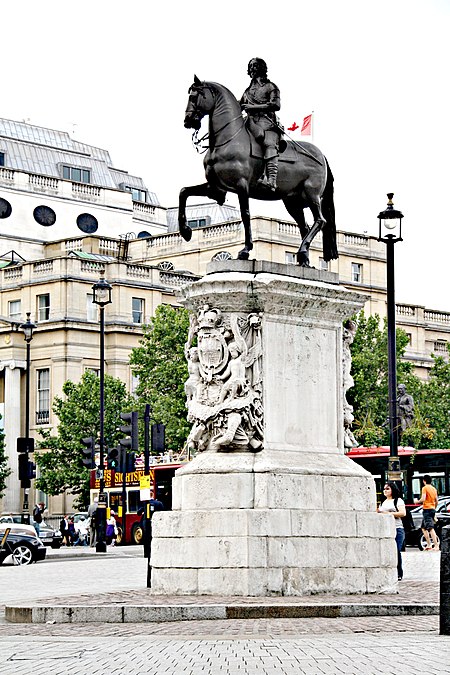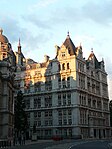Equestrian statue of Charles I, Charing Cross

The equestrian statue of Charles I at Charing Cross, London, is a work by the French sculptor Hubert Le Sueur, probably cast in 1633. It is considered the central point of London. Its location at Charing Cross is on the former site of the most elaborate of the Eleanor crosses erected by Edward I, which had stood for three and a half centuries until 1647. Charing Cross is used to define the centre of London and a plaque by the statue indicates that road signage distances are measured from this point. The statue faces down Whitehall towards Charles I's place of execution at Banqueting House.The first Renaissance-style equestrian statue in England, it was commissioned by Charles's Lord High Treasurer Richard Weston for the garden of his country house in Roehampton, Surrey (now in South London). Following the English Civil War the statue was sold to a metalsmith to be broken down, but he hid it until the Restoration. It was installed in its current, far more prominent location in the centre of London in 1675, and the elaborately carved plinth dates from that time.
Excerpt from the Wikipedia article Equestrian statue of Charles I, Charing Cross (License: CC BY-SA 3.0, Authors, Images).Equestrian statue of Charles I, Charing Cross
Charing Cross, London Covent Garden
Geographical coordinates (GPS) Address External links Nearby Places Show on map
Geographical coordinates (GPS)
| Latitude | Longitude |
|---|---|
| N 51.50734 ° | E -0.12768 ° |
Address
Charles I
Charing Cross
SW1A 2DX London, Covent Garden
England, United Kingdom
Open on Google Maps








